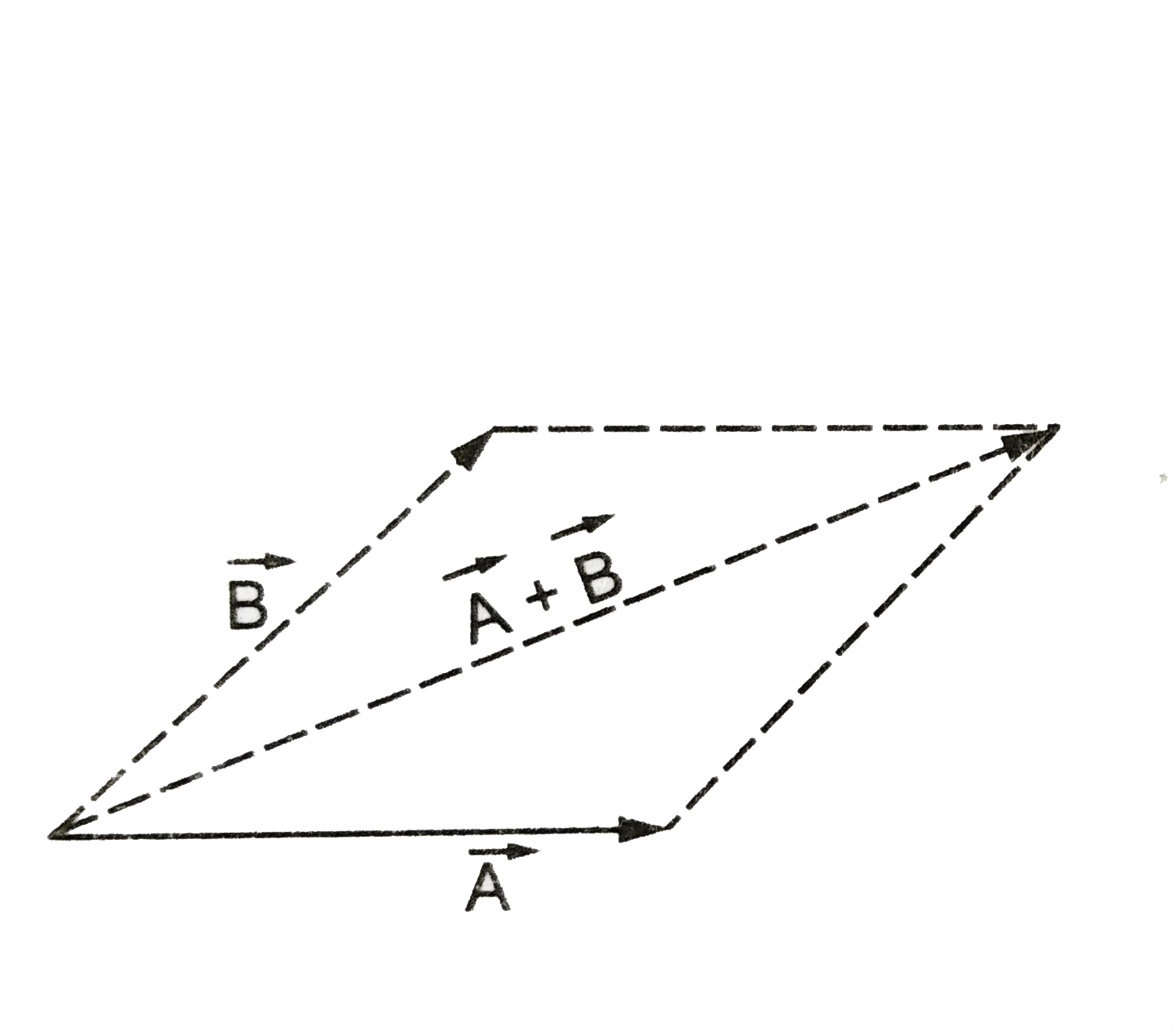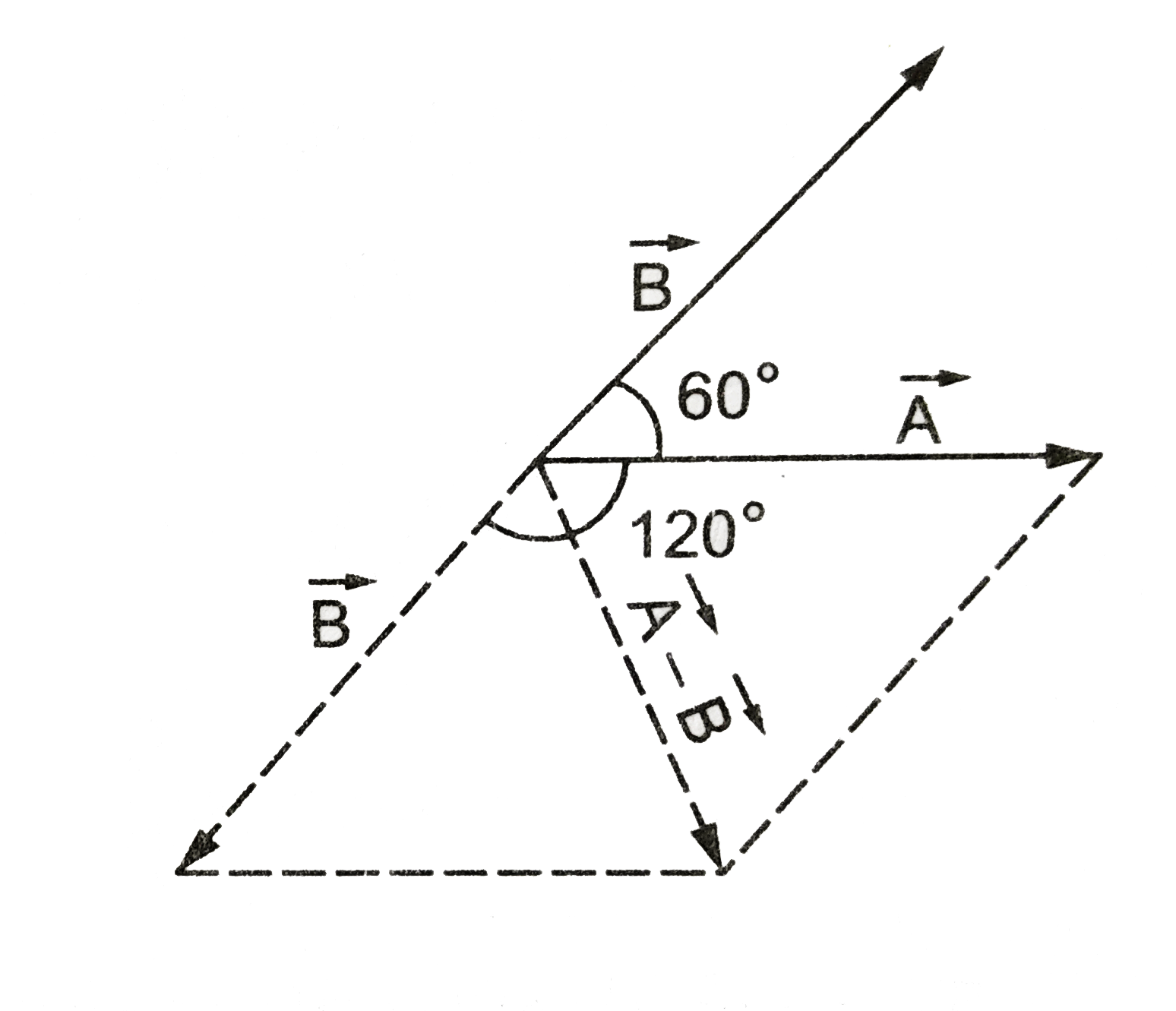A particle has two velocities of equal magnitude inclined to each other at angle θ. If one of them is halved, the angle between the other and the original resultant velocity is bisected by the new resultant. Then θ is (A) 1200 (B) 450 (C) 600 (D) 900
To solve the problem step by step, let's denote the two equal velocities as V1 and V2, both having a magnitude V. The angle between them is θ.
1. Step 1: Represent the velocities in vector form.
We can represent the two velocities as:
V1=V^i
V2=V(cosθ^i+sinθ^j)
2. Step 2: Find the original resultant velocity R.
The resultant velocity R is given by:
R=V1+V2=V^i+V(cosθ^i+sinθ^j)=V(1+cosθ)^i+Vsinθ^j
3. Step 3: Calculate the magnitude of the original resultant velocity.
The magnitude of R is:
|R|=√(V(1+cosθ))2+(Vsinθ)2
Simplifying this gives:
|R|=V√(1+cosθ)2+sin2θ
=V√1+2cosθ+cos2θ+sin2θ=V√2+2cosθ=V√2(1+cosθ)=V√2√1+cosθ
4. Step 4: Halve one of the velocities.
Now, we halve V2:
V′2=12V(cosθ^i+sinθ^j)=V2cosθ^i+V2sinθ^j
5. Step 5: Find the new resultant velocity R′.
The new resultant velocity R′ is:
R′=V1+V′2=V^i+(V2cosθ^i+V2sinθ^j)
=(V+V2cosθ)^i+V2sinθ^j
6. Step 6: Analyze the angle bisector condition.
According to the problem, the angle between R and R′ is bisected by the new resultant. This means that the angle between R and R′ can be expressed in terms of θ.
7. Step 7: Use the tangent formula for angle bisector.
The tangent of the angle between two vectors can be expressed as:
tan(ϕ2)=|R||R′| (where ϕ is the angle between R and R′)
8. Step 8: Solve for θ.
After simplifying the equations and using the properties of trigonometric identities, we find that:
θ=120∘
Thus, the correct answer is (A) 120°.
We can represent the two velocities as:
V1=V^i
V2=V(cosθ^i+sinθ^j)
The resultant velocity R is given by:
R=V1+V2=V^i+V(cosθ^i+sinθ^j)=V(1+cosθ)^i+Vsinθ^j
The magnitude of R is:
|R|=√(V(1+cosθ))2+(Vsinθ)2
Simplifying this gives:
|R|=V√(1+cosθ)2+sin2θ
=V√1+2cosθ+cos2θ+sin2θ=V√2+2cosθ=V√2(1+cosθ)=V√2√1+cosθ
Now, we halve V2:
V′2=12V(cosθ^i+sinθ^j)=V2cosθ^i+V2sinθ^j
The new resultant velocity R′ is:
R′=V1+V′2=V^i+(V2cosθ^i+V2sinθ^j)
=(V+V2cosθ)^i+V2sinθ^j
According to the problem, the angle between R and R′ is bisected by the new resultant. This means that the angle between R and R′ can be expressed in terms of θ.
The tangent of the angle between two vectors can be expressed as:
tan(ϕ2)=|R||R′| (where ϕ is the angle between R and R′)
After simplifying the equations and using the properties of trigonometric identities, we find that:
θ=120∘
Similar Questions
Two plane mirrors are inclined to each other at an angle θ. A ray of light is reflected at one
mirror and then at the other. Find the total deviation of the ray.
View SolutionThe angle between the plane 3x+4y=0 and z-axis is (A) 00 (B) 300 (C) 600 (D) 900
View SolutionThe angle between the plane 3x+4y=0 and the line x2+y2=0 is (A) 00 (B) 300 (C) 600 (D) 900
View SolutionTwo vectors having equal magnitudes A make an angle θ with each other. Find the magnitude and direction of the resultant.
View SolutionTwo vectors having equal magnitudes A make an angle θ with eahc other. Find the magnitude and direction of the resultant.
View SolutionThe angle between a line x=1,y=2andy+1=0,z=0 is (A) 00 (B) 300 (C) 600 (D) 900
View SolutionTwo equal forces (P each) act at a point inclined to each other at an angle of 120∘. The magnitude of their resultant is
View SolutionOne angle is equal to three times its supplement. The measure of the angle is (a) 1300 (b) 1350 (c) 900 (d) 1200
View SolutionTwo vectors of equal magnitude of 5 unit have an angle 600 between them. Find the magnitude of (a) the sum of the vectors and (b) the difference of the vectors.
 .
.  .
.
View SolutionResultant of two vectors one having magnitude twice of other is perpendicular to the smaller vector then find the angle ( in∘) between the vectors ?
View Solution
